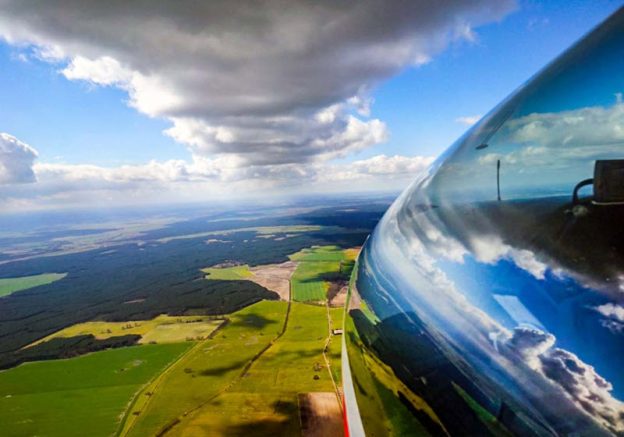I’m on the jet home from the Flight Challenge Cup in Prievidza, Slovakia. It’s among the first few competitions that get flown in Europe alongside the Pribina Cup, often they both receive 100-plus entries each (year). The spring conditions at the FCC can either bring really exciting flying and fast speeds along convergence lines, super tactical weather, or just rain. Fortunately this year, we flew for 8 days and everyone went home safely and happily. In this article, I hope to talk about whether it’s better to cruise fast and climb in thermals along the convergence line, or whether it’s better to fly slower sucking up the energy, or a combination of both?
Cruise fast or climb in cruise
This topic came to mind as I was comparing the two styles of my teammate and I, perhaps it comes down to his own training and the theory he has come up with, or perhaps he is more comfortable with the terrain and glider that he’s flying. I think it’s a combination of both which separated us on many glides. The funny thing though was, both styles appeared to be as optimum as the other as we’d always meet up at the end of the convergence line at the same altitude! Ultimately, it just came down to your own risk profile which is always important to consider.
In Australia, I’m known for being one of the fastest cruisers inter-thermal. The main reason is that I have absolute confidence in the paddock selection below/ahead of me, I have my own glider and 100% belief in my thermal finding ability. In the mountainous terrain of Prievidza, I was cruising slower than others in general, as I wanted more margin for error for both safety and my own sporting risk.
Fast or slow? I was fortunate to be on a ‘Plain Soaring’ course with 3 times open class world champion, George Lee. For 2wks, we lived and breathed high-performance XC with focused competitive coaching in his Nimbus 4DM over the skies of the Darling Downs, Queensland. One of the key lessons was this very topic, which has stuck in my brain forever and a day. So which one is it?
Cloud street end
The answer is to fly at the speed which enables you to reach the end of the cloud street at the base. So is this just a cruise flight or can it include a thermal? The answer in my mind is that, if you can climb a straight line to the base by the end, then this is the optimum/speed. If you must thermal along the way, then the McCready speed to take the climb is necessary, but only high enough so that you can reach the end of the convergence at the base.
Don’t count on the last cloud
Risks or cautions? Typically the first and last cloud doesn’t work, so don’t bank on it working otherwise you may end up disappointed. Try to make sure you’re at the base just prior to the end, as this will give you more margin and still a super speed. In this situation, I prefer to be just on the slower side, because it gives me more options, higher gives a better TAS than scratching down low, it gives you more opportunities to climb if you’re unsure of the weather or terrain ahead, typically thermals are also more organized and bigger up higher too. Tread your own path, fly within your own risk profile, and of course, always have fun while you’re doing it! Source: ‚Adam Woolley / Wings & Wheels‚.


